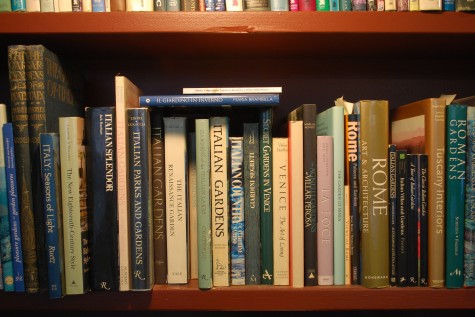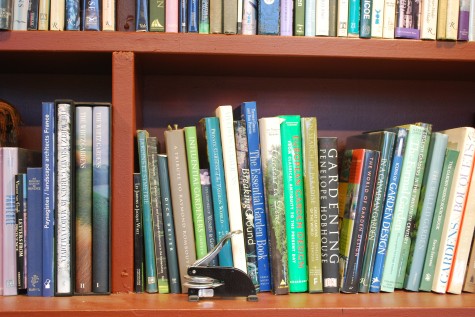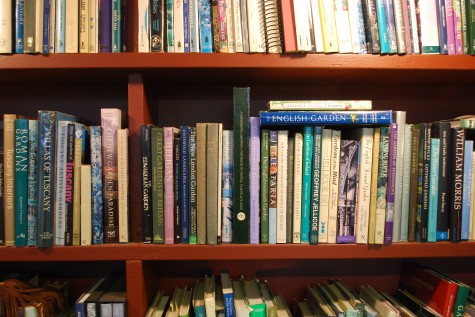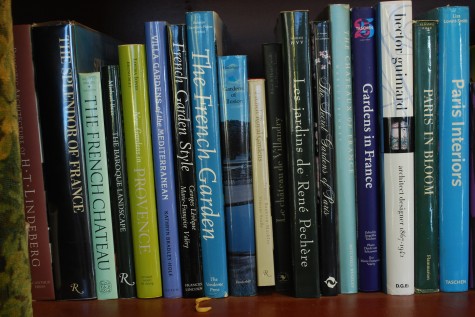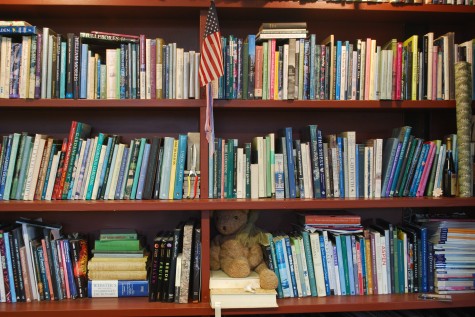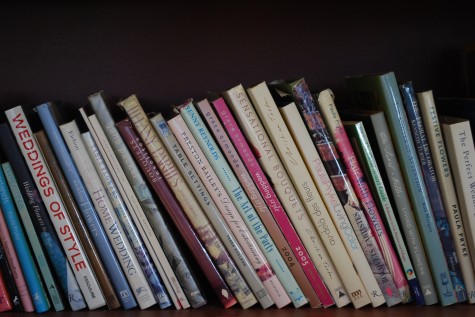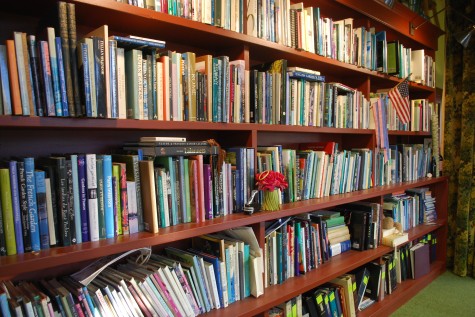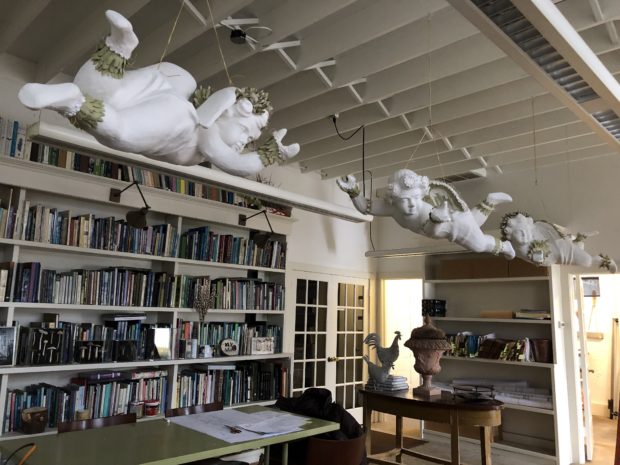 My last post about the restoration of the paper mache cherubs included the above picture. The cherubs aside, I had a number of comments about my library, and requests for more information about it. As the last time I wrote about it was in 2009, I think it is fine to address it again. I have loved books my entire life. My Mom saw to that. The gardening books I bought in my twenties were focused on the horticulture of perennial plants. The library in my thirties expanded into woody plants and shrubs. I have a well worn copy of Michael Dirr’s book “The Manual of Woody Landscape Plants”. I am quite sure I read it cover to cover multiple times. And I still use it as a reference. Landscape design drove my book purchases in my forties, and in my fifties. I collected books about landscape design, both historic and contemporary, in countries other than my own. The additions to my library from my sixties are dominated by monographs of specific landscape designers whom I admire. Don’t get me started on the names of those designers. It would be a written wave.
My last post about the restoration of the paper mache cherubs included the above picture. The cherubs aside, I had a number of comments about my library, and requests for more information about it. As the last time I wrote about it was in 2009, I think it is fine to address it again. I have loved books my entire life. My Mom saw to that. The gardening books I bought in my twenties were focused on the horticulture of perennial plants. The library in my thirties expanded into woody plants and shrubs. I have a well worn copy of Michael Dirr’s book “The Manual of Woody Landscape Plants”. I am quite sure I read it cover to cover multiple times. And I still use it as a reference. Landscape design drove my book purchases in my forties, and in my fifties. I collected books about landscape design, both historic and contemporary, in countries other than my own. The additions to my library from my sixties are dominated by monographs of specific landscape designers whom I admire. Don’t get me started on the names of those designers. It would be a written wave.
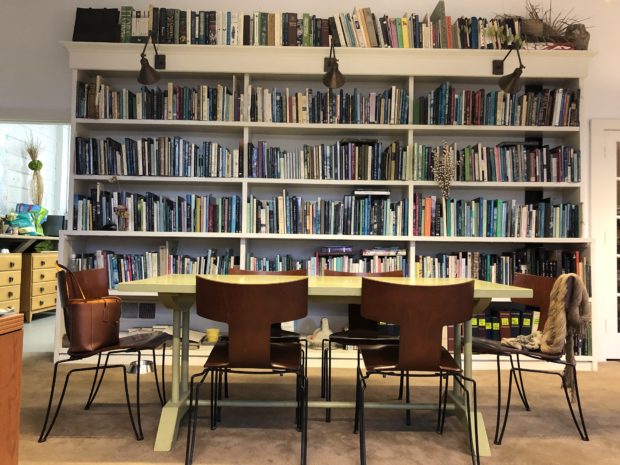 But that is what a library provides. Volumes of the printed word and photographs that can answer questions, inform planting schemes and teach good horticultural practices. They tell the story of the history of the garden, and their designers. Books are a window into history, and the work of others. My library informs my practice, but better yet, it informs my life. Landscape and garden design is my profession, and my clients have the right to expect that I have a well rounded education. I find that what I read informs my work. A good garden book is a busman’s holiday for me. I make a point of researching and buying new books every year. Reading the printed page is an absorbing and compelling activity I would not do without. Yes, I have read all of the books in my library. Some several times over. Ursula Buchan’s book “The English Garden” I have read at least 4 times. She is a great writer.
But that is what a library provides. Volumes of the printed word and photographs that can answer questions, inform planting schemes and teach good horticultural practices. They tell the story of the history of the garden, and their designers. Books are a window into history, and the work of others. My library informs my practice, but better yet, it informs my life. Landscape and garden design is my profession, and my clients have the right to expect that I have a well rounded education. I find that what I read informs my work. A good garden book is a busman’s holiday for me. I make a point of researching and buying new books every year. Reading the printed page is an absorbing and compelling activity I would not do without. Yes, I have read all of the books in my library. Some several times over. Ursula Buchan’s book “The English Garden” I have read at least 4 times. She is a great writer.
 I have arranged my library as follows. All of my books are organized by topic. The very top shelf is populated by garden reference books. I have been gardening long enough to not need those books so often. But a ladder can get me to any volume I want to consult. I go up there more often than you would think. That said, I do use the internet to research horticultural topics. That was a source that was not available to me when I I first started collecting books. I can say that a good many articles on line are poorly thought out and barely skim the surface. I like my books.
I have arranged my library as follows. All of my books are organized by topic. The very top shelf is populated by garden reference books. I have been gardening long enough to not need those books so often. But a ladder can get me to any volume I want to consult. I go up there more often than you would think. That said, I do use the internet to research horticultural topics. That was a source that was not available to me when I I first started collecting books. I can say that a good many articles on line are poorly thought out and barely skim the surface. I like my books.
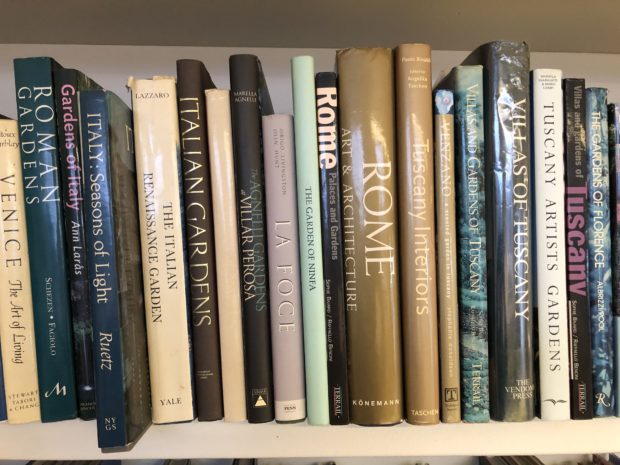 All of my books are organized by topic. The plant reference books are at the top of the bookshelf. Other reference books? Stone in the landscape. Brick in the landscape-and so on. I have other sections organized around gardens and landscapes by country. Pictured above, a slice of my books on Italian gardens. That section includes books referencing medieval Italian gardens, villa gardens, historic gardens-and contemporary Italian gardens.
All of my books are organized by topic. The plant reference books are at the top of the bookshelf. Other reference books? Stone in the landscape. Brick in the landscape-and so on. I have other sections organized around gardens and landscapes by country. Pictured above, a slice of my books on Italian gardens. That section includes books referencing medieval Italian gardens, villa gardens, historic gardens-and contemporary Italian gardens.
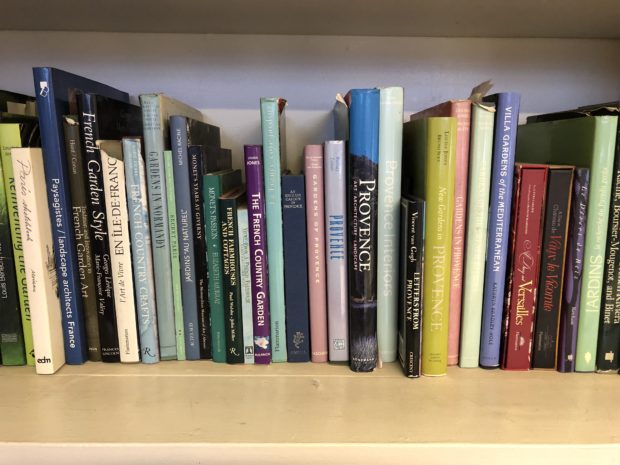 The French section is wide. For obvious reasons. French landscape design, from formal French gardens to French country gardens is a force to be reckoned with.
The French section is wide. For obvious reasons. French landscape design, from formal French gardens to French country gardens is a force to be reckoned with.
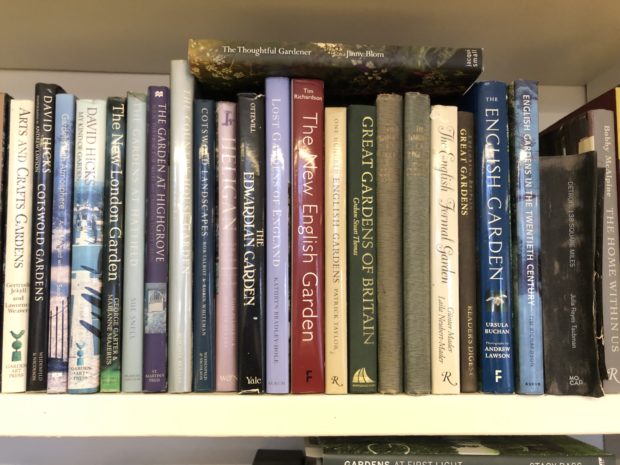 The English landscape design section is long enough to acknowledge it is an important precursor to American landscape design. Jenny Blom’s book “The Thoughtful Gardener” is outstanding.
The English landscape design section is long enough to acknowledge it is an important precursor to American landscape design. Jenny Blom’s book “The Thoughtful Gardener” is outstanding.
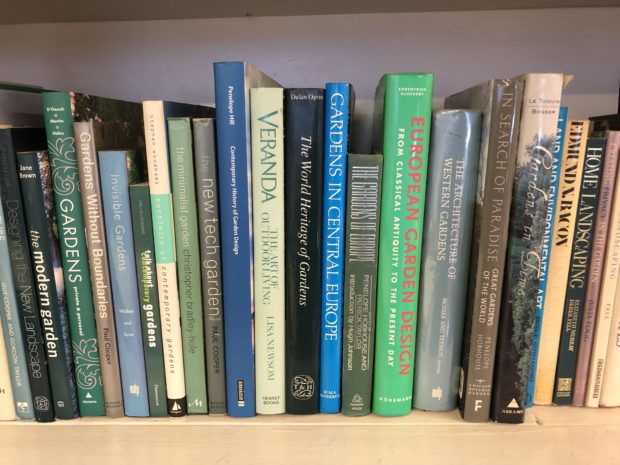 I do have a shelf section devoted to design with a particular point of view.
I do have a shelf section devoted to design with a particular point of view.
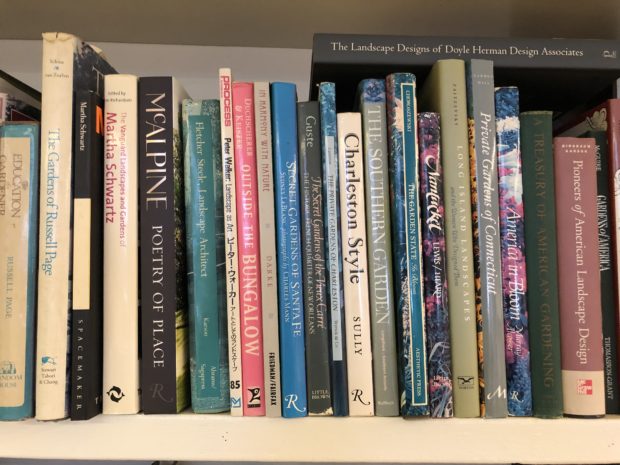 A run of shelf space for American gardens and landscape designers-of course.
A run of shelf space for American gardens and landscape designers-of course.
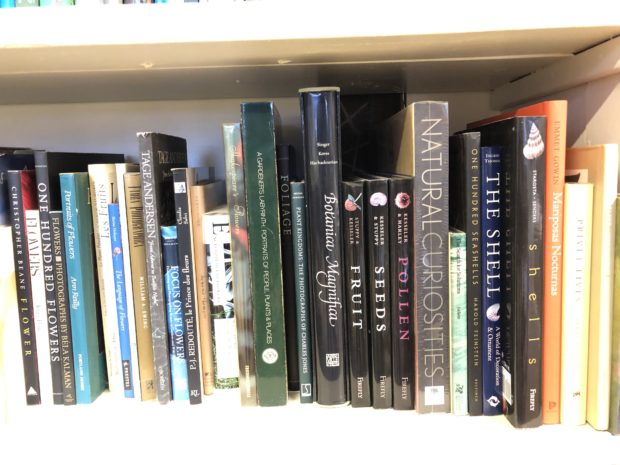 This lower self is as much about botany as it is about nature photography.
This lower self is as much about botany as it is about nature photography.
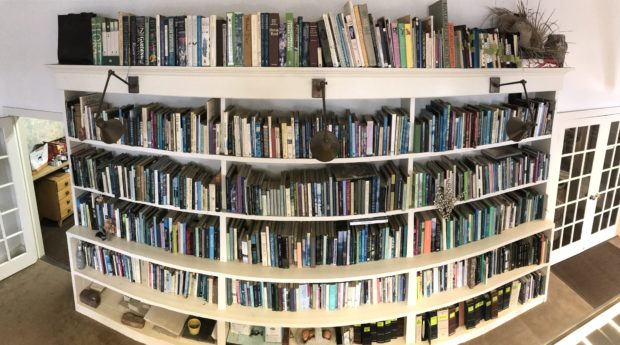 A library is a good place to spend time. All of those pages can inform a life. Can you tell I love my library? Of course I do. Read on about the value of a library, if you wish. February is a gardener’s reading month. Yes? A library
A library is a good place to spend time. All of those pages can inform a life. Can you tell I love my library? Of course I do. Read on about the value of a library, if you wish. February is a gardener’s reading month. Yes? A library
